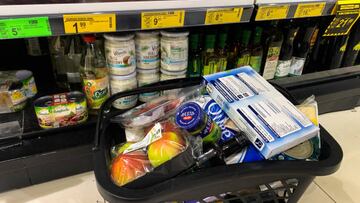SNAP program: which beneficiaries will receive the maximum food aid payment and from when?
SNAP provides financial support to low-income individuals and families who are having difficulty making ends meet to afford nutritional food.

The Supplemental Nutrition Assistance Program (SNAP), formerly known as Food Stamps, has been around for almost 60 years. The program is federally funded but administered by the states providing eligible, low-income individuals and families assistance to avoid food instability.
It is the largest food assistance program in the United States which saw participation soar by nearly 6 million during the covid-19 pandemic, now serving over 41 million people. Because it is run at the state level, the name of the program, the amount of benefits and the requirements can vary.
Also see:
The average SNAP recipient receives $239 per month
Prior to the covid-19 pandemic roughly two out of five beneficiaries were working families with an income, they now make up nearly half. More than half of households that receive SNAP assistance are families with children. The dollar value of benefits is determined by the size of a household minus a portion of their own resources that they are expected to use for purchasing food. Generally, its 30 percent of the household’s net monthly income, with certain necessities such as dependent care, medical expenses and shelter deducted.
In the lower 48 and Washington DC, the average household that participates in SNAP consists of two members which can receive up to $459 in 2022. The maximum amounts are different in Alaska, Hawaii, Guam, and the US Virgin Islands.
According to USDA Food and Nutrition Service, currently the average SNAP benefit per month is $239, but the allotment ranges from an average of $193 in New Hampshire to $271 in Utah and South Dakota. In Alaska recipents on average receive $387 and in Hawaii $463.
SNAP Maximum Monthly Allotment Based on Household Size
| People in Household | Maximum Monthly Allotment |
| 1 | $250 |
| 2 | $459 |
| 3 | $658 |
| 4 | $835 |
| 5 | $992 |
| 6 | $1,190 |
| 7 | $1,316 |
| 8 | $1,504 |
| Each additional person | +$188 |
| Source: USDA Food and Nutrition Service |
SNAP benefits are paid monthly on varying schedules
Each state has its own payment schedule and the distribution may be based on a date of birth, surname or case number. Generally, payments are sent out in the first week or two of the month. Recipients are given an EBT debit card which looks like a regular debit card on to which benefits are loaded every month. Recipients have a time limit for how long they have to spend the money from the time it is deposited each month which varies by state, but is generally at least nine months.
One of the reasons for changing the name of the program from Food Stamps to SNAP was to help change the perception of the programs. People should not feel any stigma about using the Supplemental Nutrition Assistance Program, it can be a valuable resource to bridge the gap between not being able to put food on the table and having a decent meal. It has also been a valuable tool in the fight against poverty in the US over its nearly 60 years of existence.






